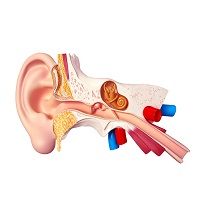Article
Most Common Bacteria in Toddlers Scheduled for Myringotomy
Author(s):
Widespread uptake of Streptococcus pneumonia conjugate vaccine (PCV7) has changed the microbiological landscape of infectious disease in children. Many studies have demonstrated the expected shift away from S. pneumoniae as the leading cause of acute otitis media, and identify emerging organisms.

Recurrent acute otitis media (rAOM) and persistent otitis media with effusion (OME) are the most common indications for myringotomy (surgical insertion of ventilation tubes) in children. Antibiotics are only modestly effective for persistent or recurring ear infection, and using antibiotics increases risk of adverse drug reaction significantly. Several bacteria tend to cause rAOM and OME, but widespread uptake of Streptococcus pneumonia conjugate vaccine (PCV7) has changed the microbiological landscape of infectious disease in children. Many studies have demonstrated the expected shift away from S. pneumoniae as the leading cause of acute otitis media, and identify emerging organisms. A study published in the Journal of Paediatrics and Child Health reexamines causative agents in children who were immunized with PCV7.
The researchers, a team from New Zealand, examined middle ear fluid (MEF) from 325 children younger than age 3 years who had been vaccinated with (PCV7). These children were scheduled for myringotomy between May and November 2011. The researchers compared these children’s nasopharyngeal (NP) otopathogen carriage to that of 137 children with no history of otitis media.
In middle ear fluid samples, Haemophilus influenzae was cultured in 19.4% of all samples and was polymerase chain reaction (PCR) positive in 43.4%. (PCR is more sensitive than culture, it detects infectious agents, and it discriminates non-pathogenic from pathogenic strains.) S. pneumoniae and Moraxella catarrhalis were cultured in <10% of MEF samples but were PCR positive for 23.1% and 38.7%, respectively.
In nasopharyngeal samples, H. influenzae was the most common organism isolated from NP samples (60%) in the grommet group, while M. catarrhalis (56%) was the most common in the non-otitis prone group. S. pneumoniae was more commonly found in the nasopharynx of children with ear disease (41% vs. 29%). 19F was the most prominent S. pneumoniae serotype in NP samples of both groups, but no serotype dominated in MEF.
As expected, S. pneumoniae was the least commonly detected otopathogen by culture or PCR in MEF or by culture of NP, reflecting the PCV7 vaccine’s influence. No single serotype dominated.
Similar results have been reported from studies conducted in the United States. With the introduction of pneumococcal vaccines that cover additional serotypes (and especially the Protein D component of H. influenza), we expect to see additional bacterial shifts.





